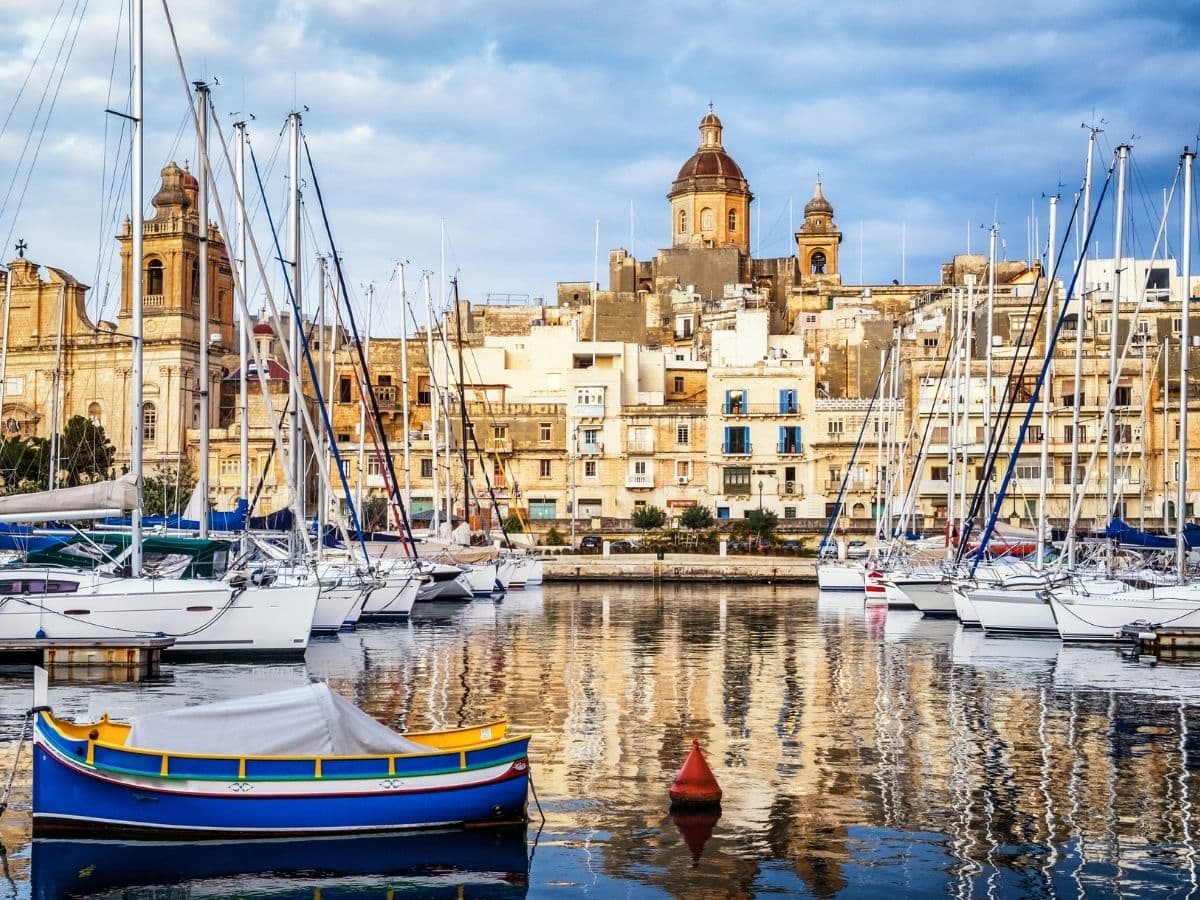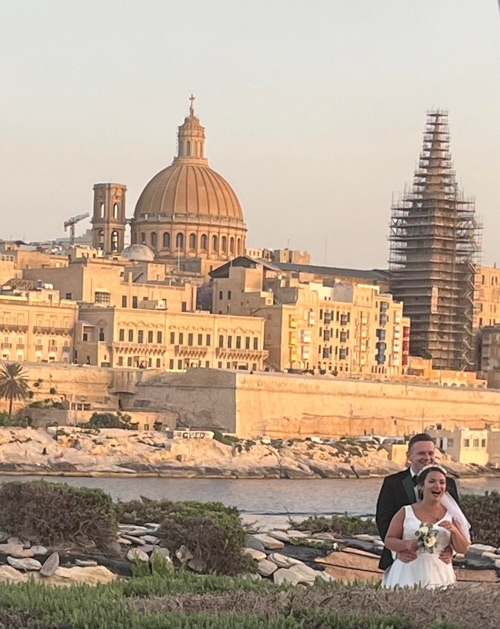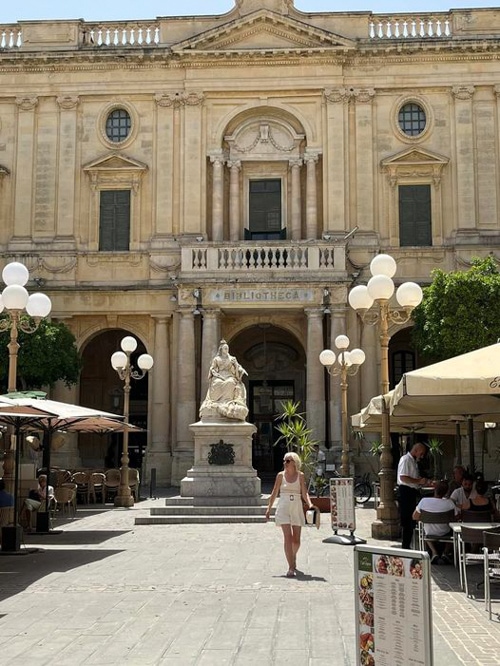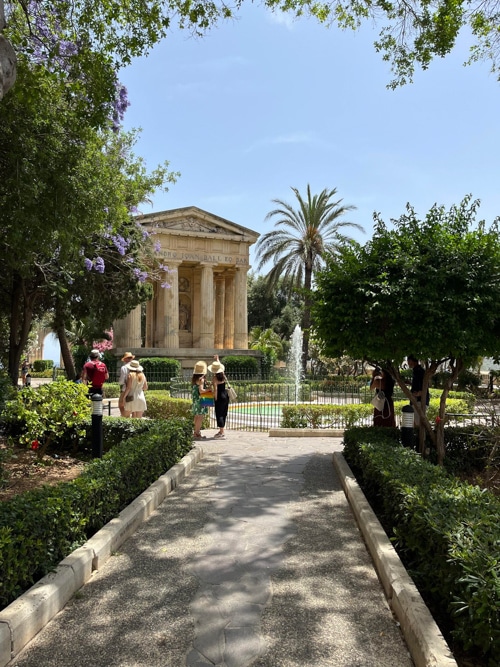
Go World Travel is reader-supported and may earn a commission from purchases made through links in this piece.
It feels like Malta has been on everyone’s hit list, and not just that of tourists; centuries of invasions and colonisation reflect that.
The Greeks gave the island its name, “Malta,” which is close to their word for honey. This affirms the now centuries-long association with the production of varieties such as ghasel tas-saghtar, the wild thyme honey harvested by beekeepers in the summer months.
Phoenicians colonised Malta in 800 BC, then came the Romans, followed by invasions from the Arabs, Turks, French and Brits.
The republic might have a continental European flavour these days, with two-thirds of the population conversant in Italian (and 80% Catholic), but the vibe is not exclusively Latinesque.
However, don’t assume Malta lacks its own identity. The intriguing melange of all things Mediterranean is its personality. Independence may have come in 1964, but outside nations have left indelible marks and contemporary Malta embraces them.
The mix of military, colonial and cultural history is no more noticeable than in and around the bays of the east coast, particularly on Manoel Island and in Malta’s capital city, Valletta.

Manoel Island
To those less familiar with their surroundings, when gazing out at sea level from Sliema across Marsamxett Harbour, the scene on the other side of the creek conjures up a confusing tangle of stunning sun-bleached prominences.
Best Tips & Tools to Plan Your Trip
At first glance, it’s difficult to distinguish ‘mainland’ (although technically as an archipelago, there is none) from that which is not. As it turns out, Manoel Island is presented at the forefront, with the Maltese capitol of Valletta tucked away behind.
I say island. Manoel is really just that, connected to Sliema by a 30-foot-long stone-arched bridge. By contrast to the busy Sliema side of the bay, there’s little human presence or activity going on here, other than a few diners at the solitary waterside restaurant just on the other side of the bridge.
There is a boat and yacht yard but no other amenities to speak of, and only so many parts of Manoel Island can be easily reached. What it does offer is respite. An escape from the noise, bustle, traffic and pushy sales patter of day-trip touts dotted along the promenade.
Book your hotel on Manoel Island here

Fort Manoel
Gates and fences currently guard Fort Manoel on the eastern tip at the time of writing. These were erected for the sake of preservation and restoration work.
The fort was once the proud bastion of the Knights of St. John of Jerusalem. However, the knights may not have been the first to introduce Christianity to the island. The shipwrecked arrival of Paul the Apostle in the first century reputedly marks that occasion. But the ancient military religious order did a good job of imbedding the Catholic faith, ensuring its dominance even after they were forced to move on by Napoleon’s lot in 1798.
As Manoel geographically guards the bay, it’s easy to see why it was once utilised for military purposes. Although there is now an overriding feeling of abandonment (the British decommissioned their guns on the island at the turn of the 20th century).
At the top of the island, just before the road meets the fort, it’s worth taking time out to sit on the rocks among the rare greenery of olive trees and firs. This is Manoel’s highest point, which overlooks the bay.
Here, you’re provided with an instant reminder of Malta’s isolated position: smack dab in the middle of the Mediterranean, over one hundred miles from Sicily, and three hundred from the North African coast. Little wonder the island’s strategic location has been a matter of interest to a multitude of nations over the centuries.

Valletta
Valletta, or Il-Belt to the Maltese, is situated just south of Manoel and is in complete contrast to its neighbouring landmark. Even the view of Malta’s capital from the opposite side of the bay provides an immediate sense that this small but compact city is going to impress.
Construction of what is now listed as a UNESCO World Heritage Site began in 1566, with all fort defences and the main cathedral reputedly completed within 15 years.
Valletta’s etymology lies in the name of knight Jean Parisot de Valette, in recognition of his efforts in defending Malta during the Great Siege. The city currently stands as a baroque architectural masterpiece. Heavy restoration work was necessary here after significant bombing during World War II destroyed much of the infrastructure, but you’d hardly notice.
There are two ways of approaching Valletta from Sliema. The longer way round to Europe’s smallest capital city is by bus, which can take an hour or longer, depending on traffic.
An alternative option is the boat trip from Sliema harbour-front to the jetty on the other side of the bay, is a mere eight minutes. It’s also ridiculously cheap and much more fun. The ferry operation runs like clockwork, with non-stop trips across the bay as tourists pile on and off at each end for most of the day.
After stepping off the jetty at Valletta, the ritual to enter the city centre is to follow the procession of passengers up the short but steep and winding Boat Street. From there, you will pass a couple of bars and enter the periphery of Valletta’s grid-iron street network.
Book your hotel in Valletta here

Valletta City Centre
If you peer down the undulating streets and pedestrian walkways, there’s a feeling of a mini-San Francisco with an ancient twist. But Valletta doesn’t sit on a geological fault line. It has grown through the centuries on levelled rocky hill, with sides dropping dramatically to the sea.
I won’t lie. In the heat of summer, it’s a short but heavy hike into the heart of the city to get your bearings. But take in the journey as you pass cafes and some small bars, smelling the Maltese coffee and dodging the scooters and cars as you go.
Once in the pedestrianized centre, Valletta’s outlay is logical enough. Tourist attractions are well signposted, and the perpendicular street layout and major landmarks as reference points make it easy to navigate.
Cafés, restaurants and outdoor bars abound. Shops sell everything from tourist tat to upmarket sartorial elegance. There’s so much going on to see and do in what is less than one square kilometre.
Various cultural and religious marks have been left here, not least that of Christianity. The vast majority of the population is either Roman Catholic or of a related denomination, and 28 churches sit within Valletta’s perimeter.
The Basilica of Our Lady of Mount Carmel is one of the most famous. Ironically, it’s also one of the youngest, having been built in the last century on the site of a late 16th-century church that was destroyed during World War II. You’d be forgiven for thinking the basilica has always been part of the furniture here, though. It merges in well, and the 42-metre-high dome is certainly striking. An instantly recognisable part of the Valletta skyline.

The Old Town and Barrakka Gardens
When you’ve had your fill of Valletta’s cafés, crowds and places of note, venture downhill to the quieter quarter of Valletta’s old town. Away from all the noise, a sense of Malta’s past is evoked.
The dusty streets are a combination of lower-key residential properties, with only the occasional boutique hotel and gallery dotted about. Here by the water’s edge, and without the shadowy protection of the narrow streets and alleyways, the daytime heat is obvious.
The evening’s close is best enjoyed from one of Valletta’s half-dozen or so manicured and beautifully landscaped public gardens. Without a doubt, the Upper and Lower Barrakka Gardens provide some of the finest views, where they overlook the Grand Harbour.
Originally the private reserve of the Knights of St. John, it opened to the public during the French occupation a couple of centuries ago. The upper gardens feature a terrace with monuments to various prominent folk, including Winston Churchill and Sir Thomas Maitland.
The lower gardens display a variety of flowerbeds, a fountain and a neoclassical temple ccenterpiece—themonument to British naval officer Alexander Ball. As the sun goes down on this most colonial part of the island, the Barrakka Gardens offer a perfect way to end a visit to the jewel in Malta’s crown.
If You Go
All flights land at Malta International Airport, located in Luqa, 5km south-west of Valletta.
Transfer to Sliema and Valletta at off-peak times is approximately 20 minutes by car or 40 minutes by public transport.
Further information on travelling to and exploring contemporary Malta is available from the official tourism site.
For more details on Malta’s rich history go to https://www.hiddenhistory.co.uk/destinations/malta.
Read More:
Author Bio: E. Mark Windle is a well travelled UK based writer and biographer who works with domestic and international clients. As an independent freelancer, he works on variety of life story, travel, culture, music history and health themes. Contact Mark via https://windlefreelance.com
- Travel Guide to Colorado - April 26, 2024
- Travel Guide to Croatia - April 26, 2024
- Top 10 Things to Do in Ireland - April 25, 2024

